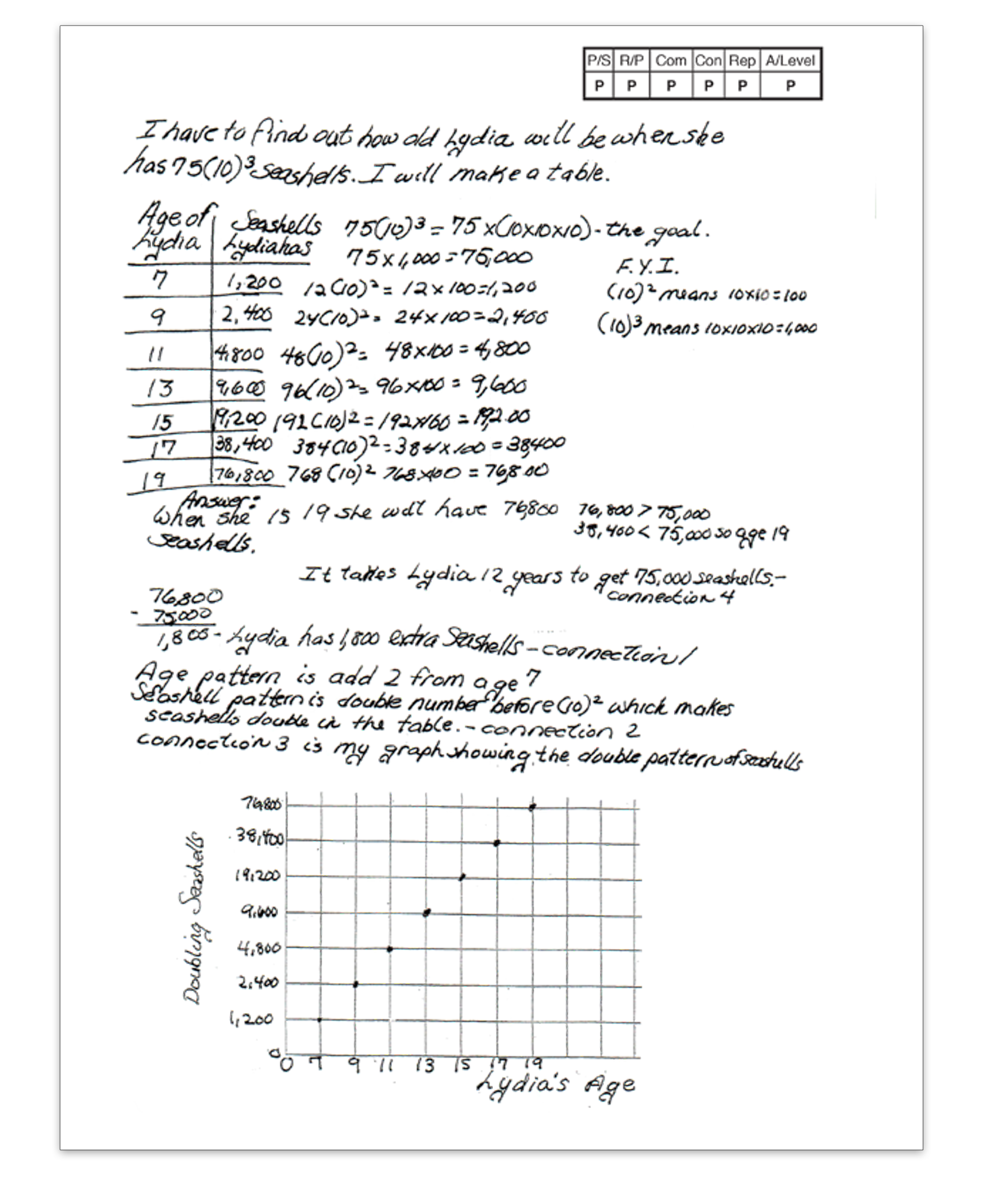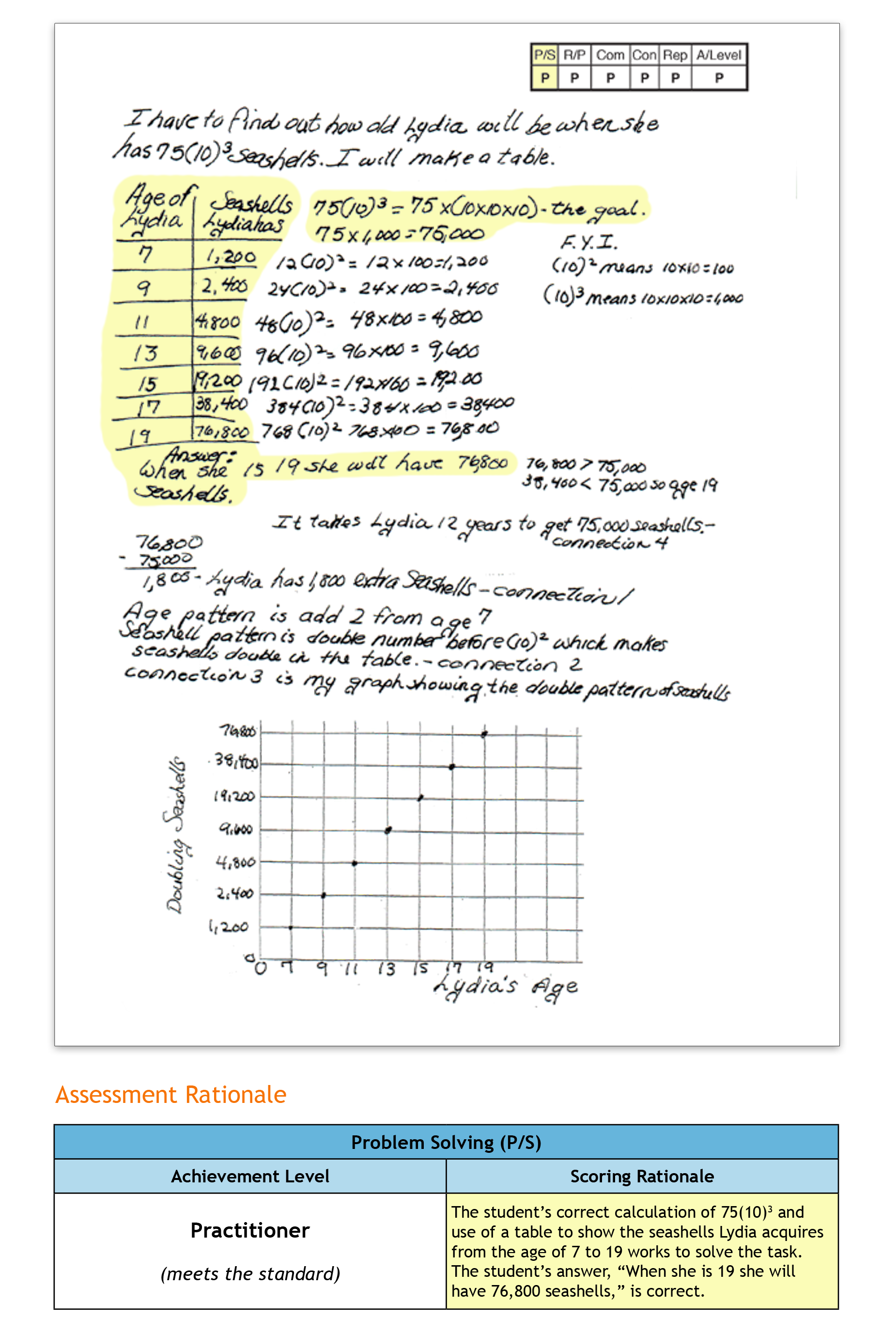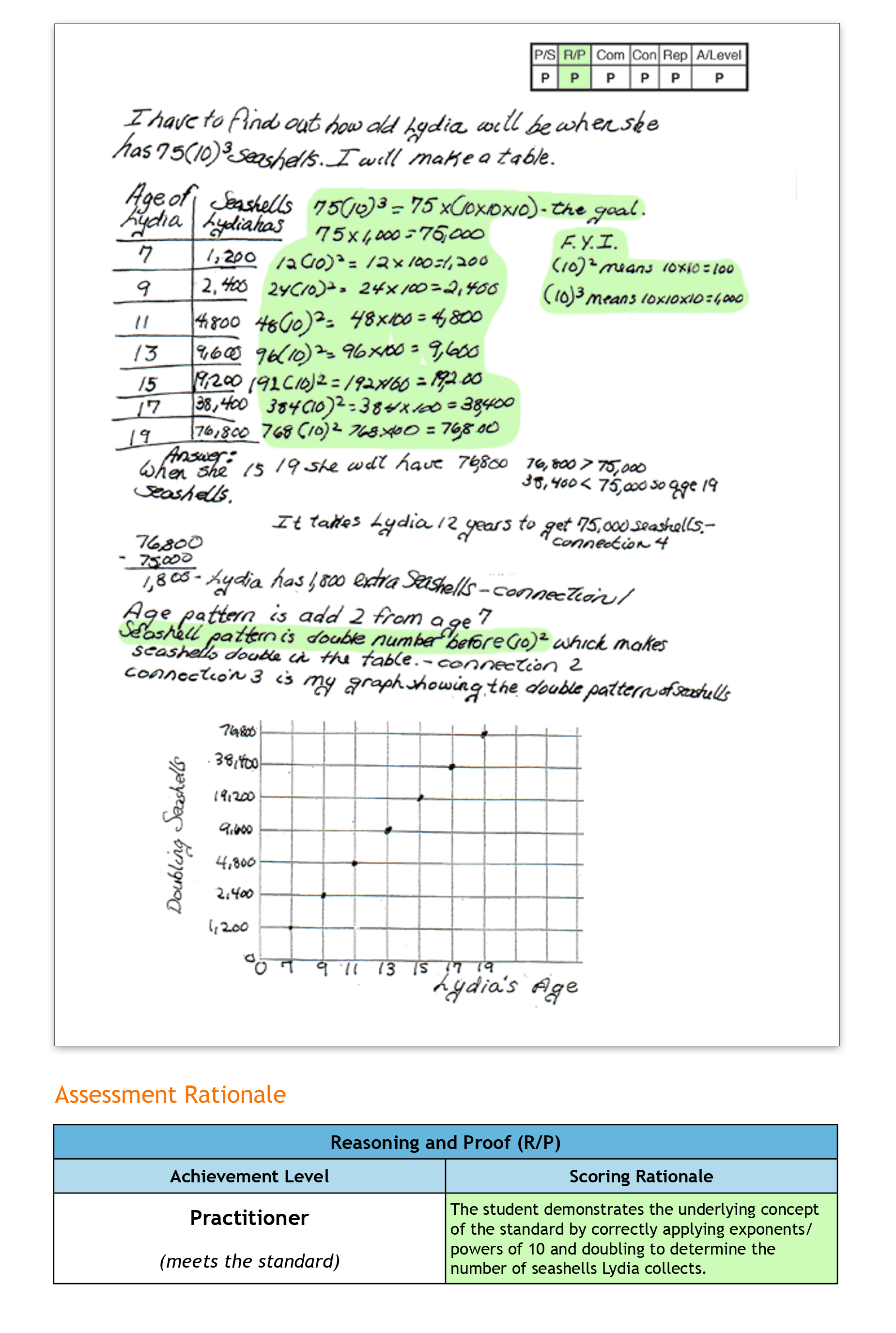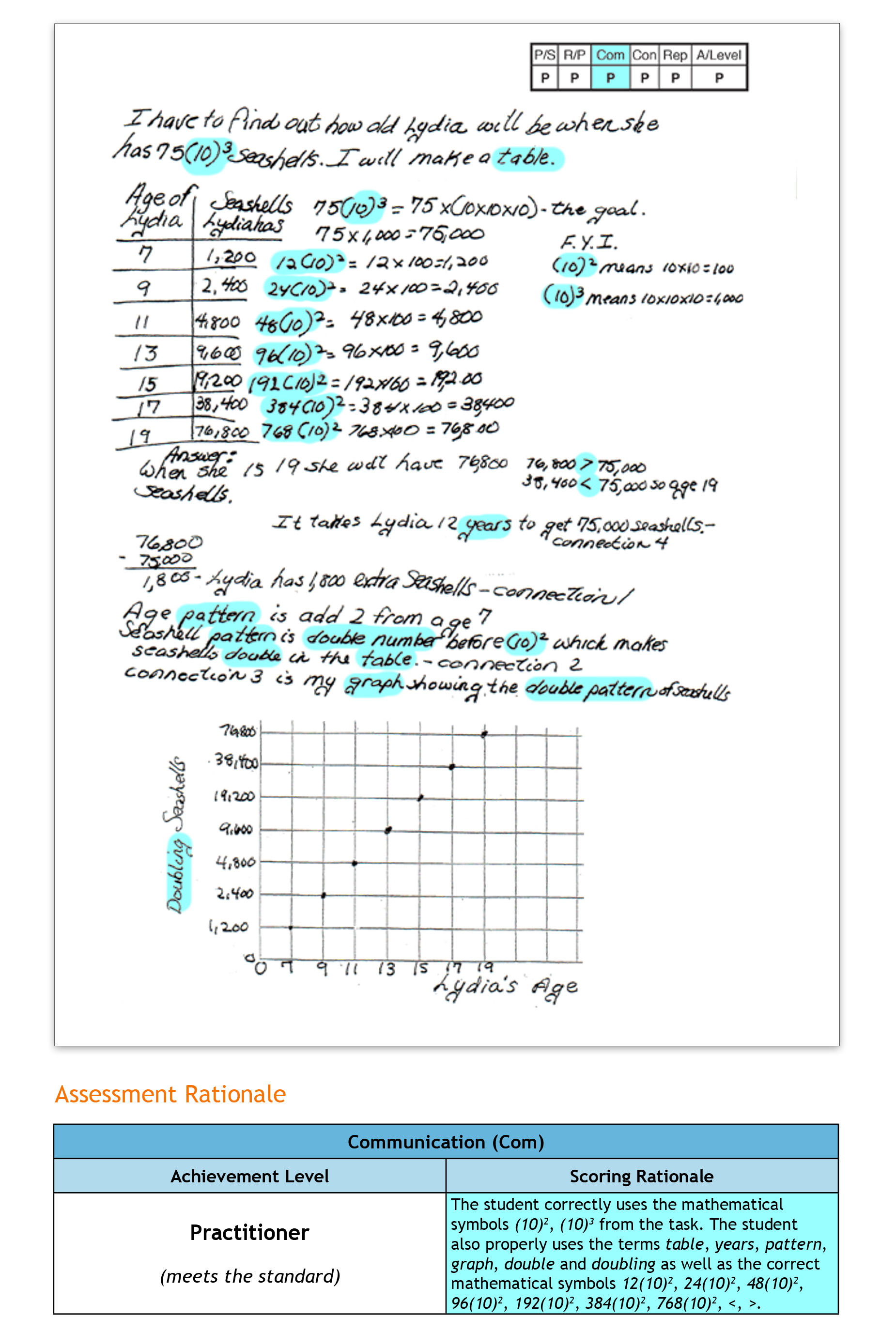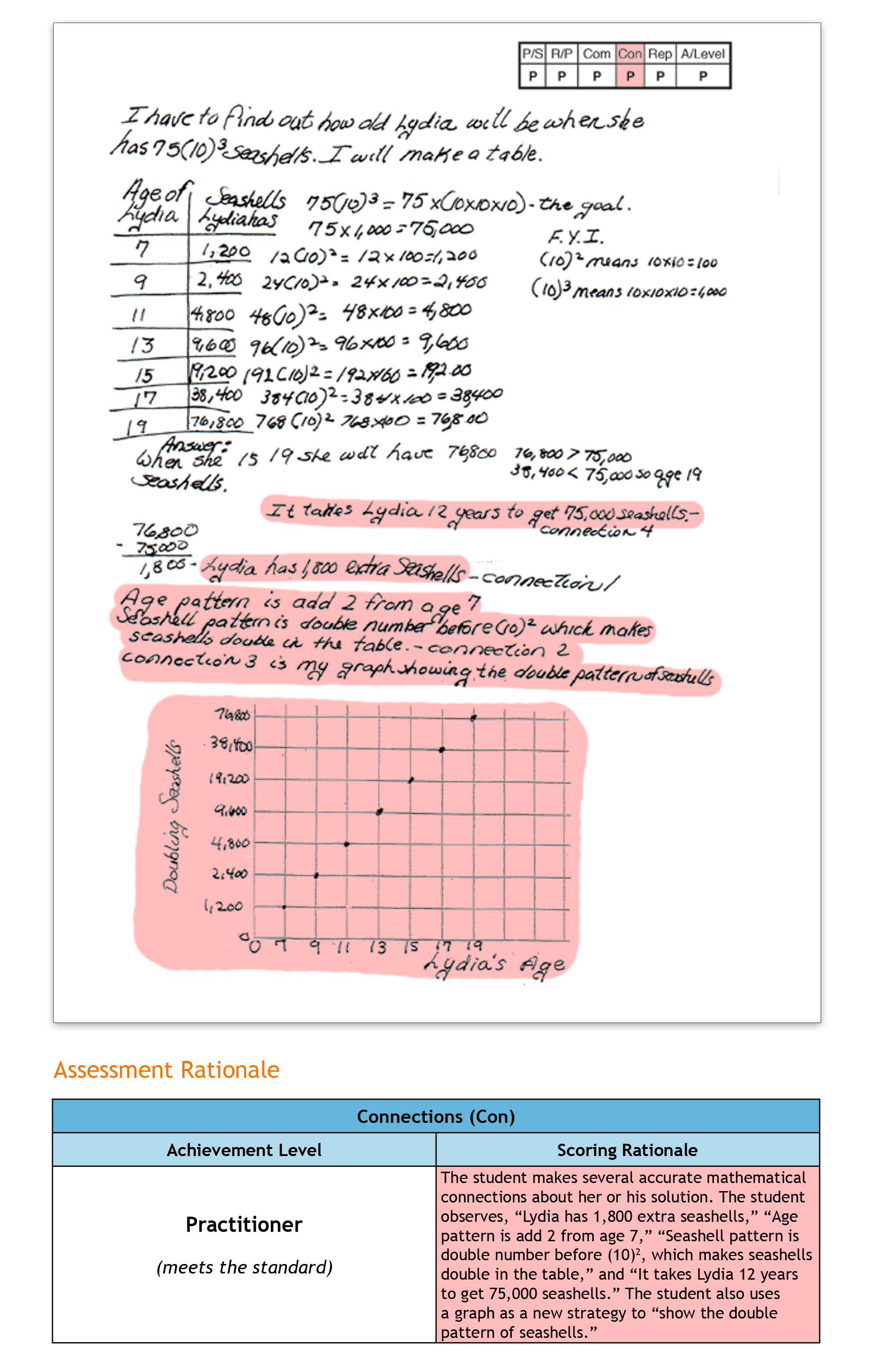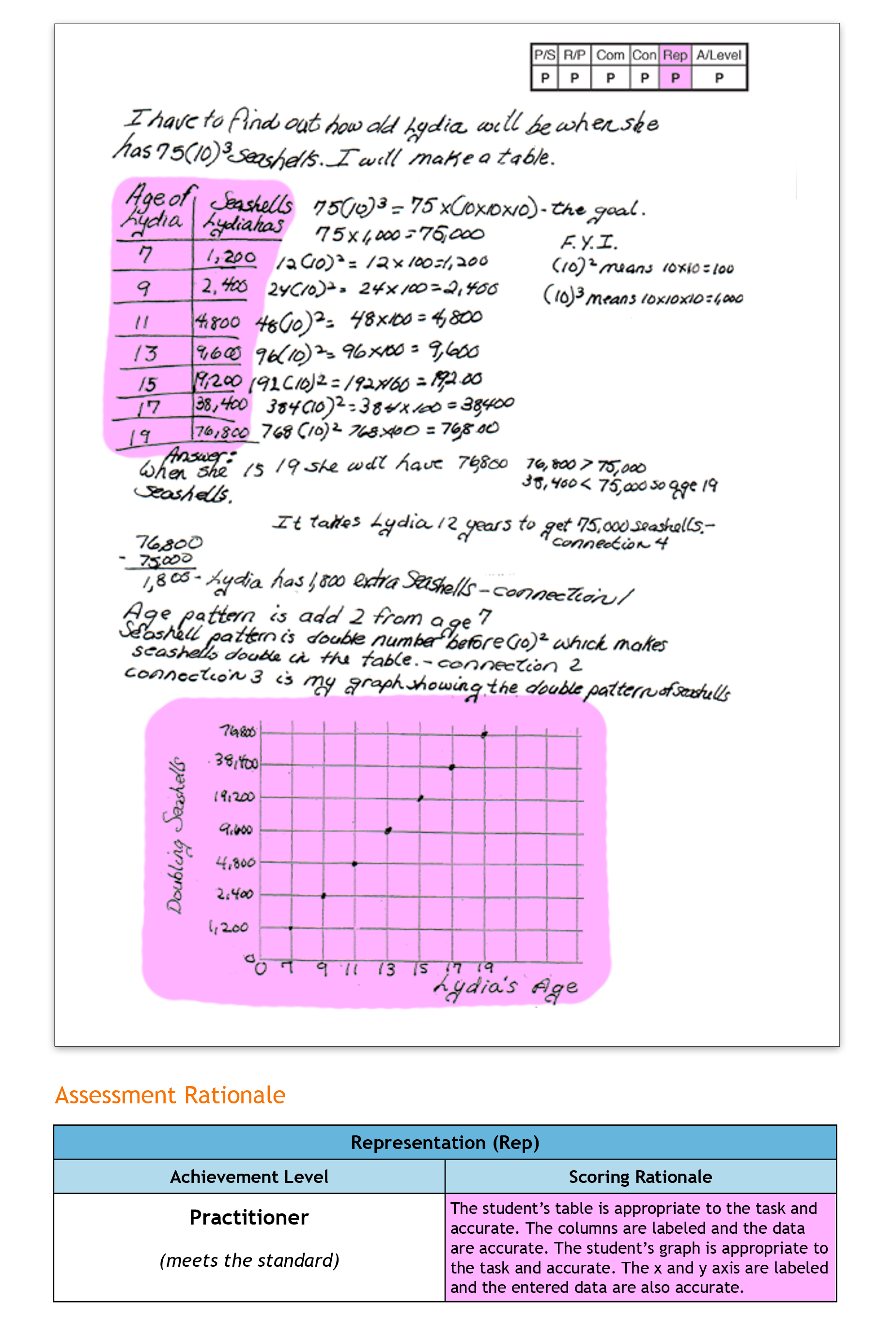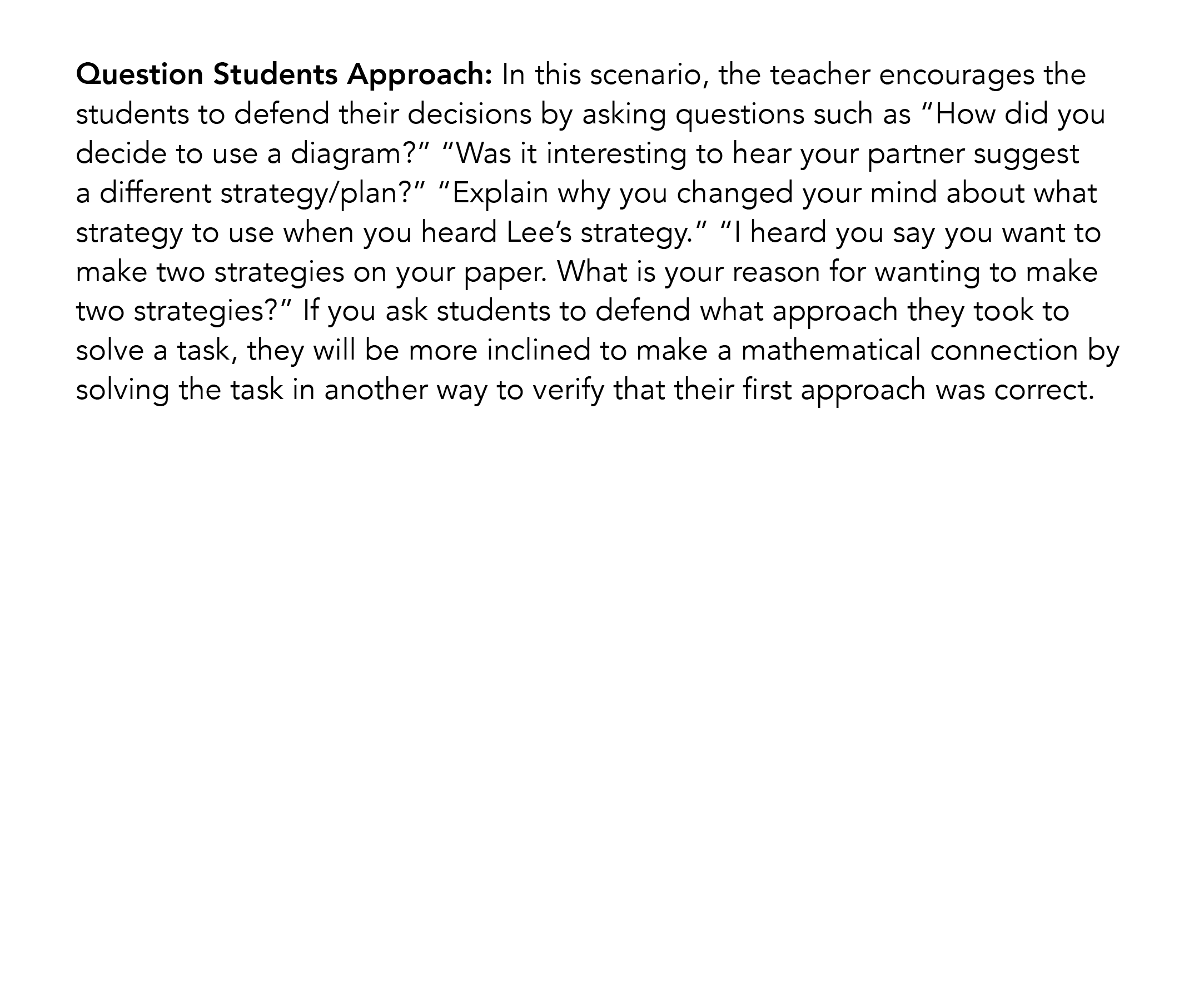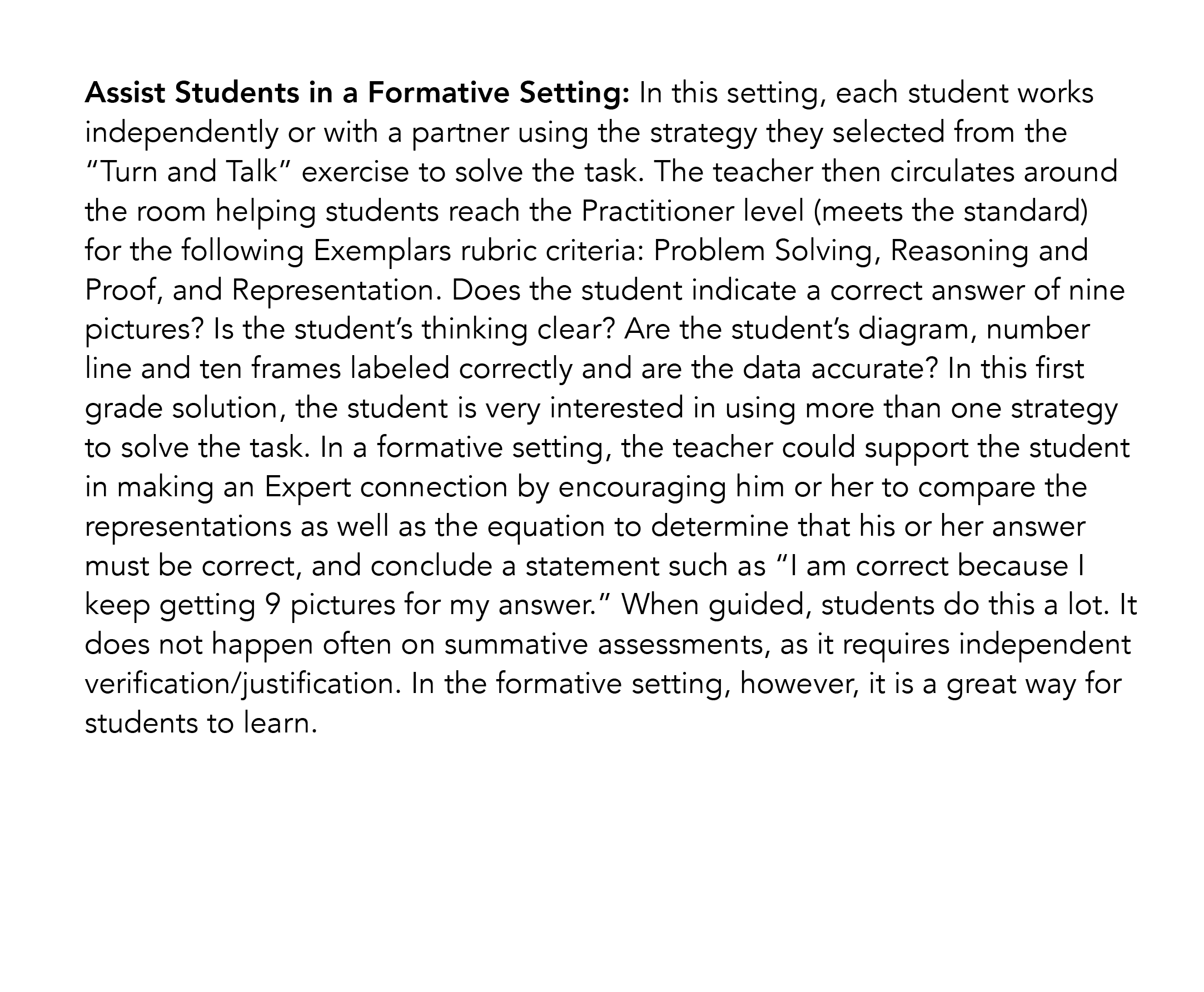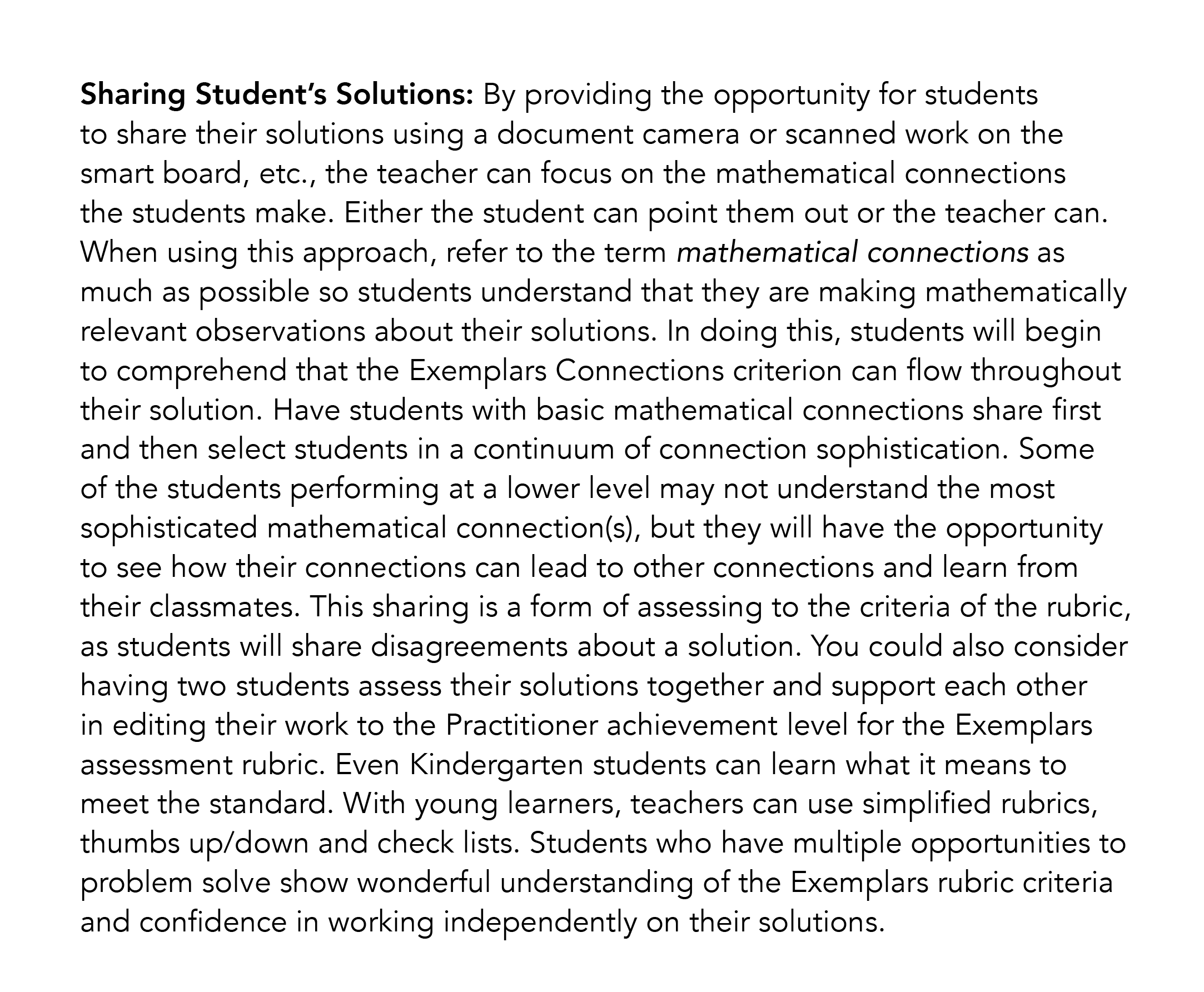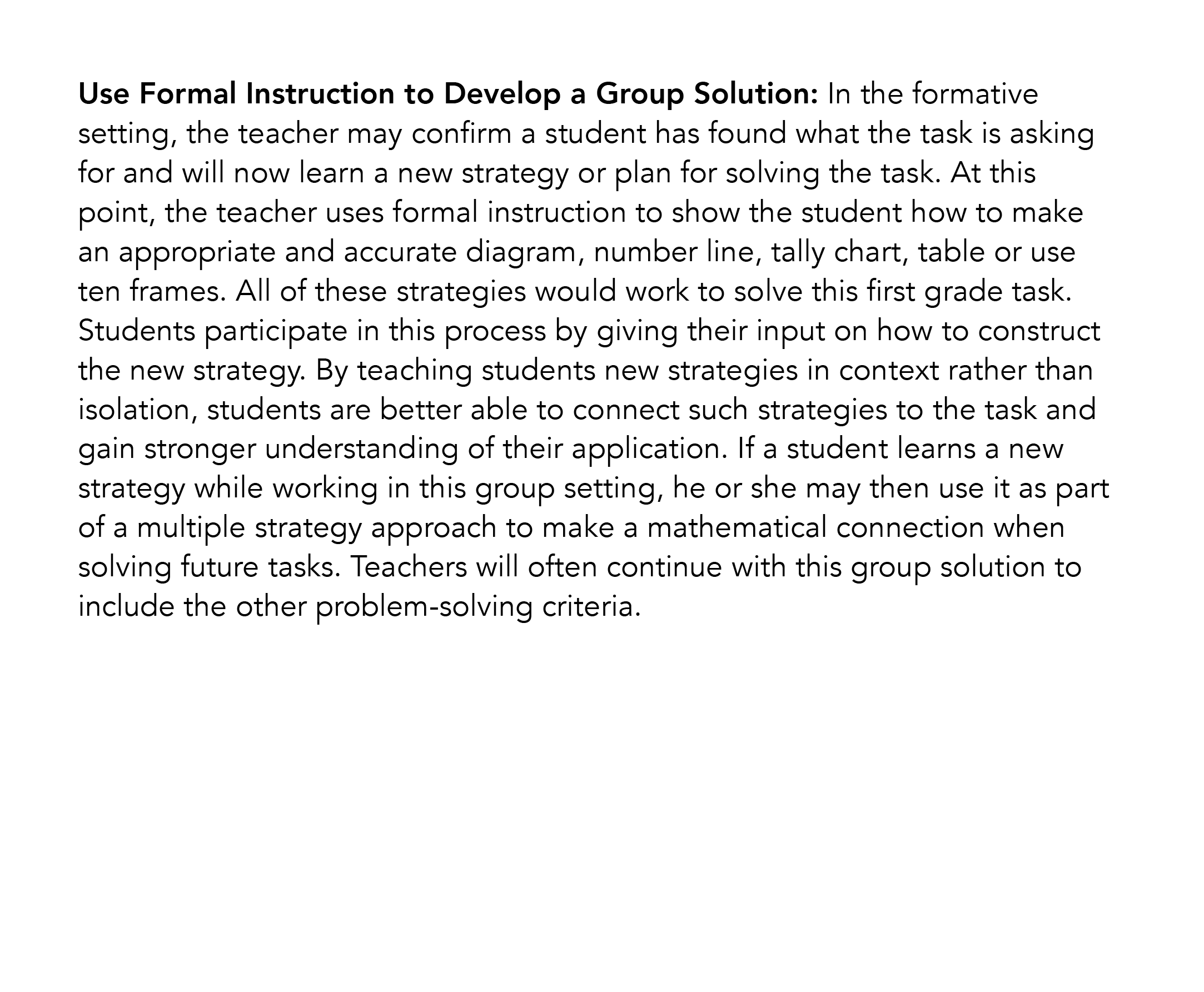Understanding Mathematical Connections at the Fifth Grade Level
Written By: Deborah Armitage, M.Ed., Exemplars Math Consultant
In today’s post, we’ll look at a fifth grade student’s solution for the task “Seashells for Lydia.” This task is one of a number of Exemplars tasks aligned to the Number and Operations in Base Ten standard 5.NBT.2. It would be given toward the end of the learning time dedicated to this standard.
In addition to demonstrating the Exemplars criteria for Problem Solving, Reasoning and Proof, Communication, Connections and Representation from the assessment rubric, this anchor paper shows evidence that students can reflect on and apply mathematical connections successfully. For many students, mathematical connections begin with the other four criteria of the Exemplars rubric, regardless of their grade.
After reviewing our scoring rationales below, be sure to check out the tips for instructional support. Try these along with the task and the Exemplars assessment rubric in your classroom. How many mathematical connections can your students come up with?
5th Grade Task: Seashells for Lydia
Lydia started collecting seashells when she was five years old. At age seven, Lydia had 12(10)2 seashells. At age nine, Lydia had 24(10)2 seashells. At age eleven, Lydia had 48(10)2 seashells. Lydia wants to collect 75(10)3 seashells. Lydia continues to collect seashells at the same rate. How old will Lydia be when she has 75(10)3 seashells? Show all of your mathematical thinking.
Common Core Alignments
- Content Standard 5.NBT.2: Explain patterns in the number of zeros of the product when multiplying a number by powers of 10, and explain patterns in the placement of the decimal point when a decimal is multiplied or divided by a power of 10. Use whole-number exponents to denote powers of 10.
- Mathematical Practices: MP1, MP3, MP4, MP5, MP6, MP7
Click on the orange arrow to the right of the solution below to view Exemplars scoring rationales.



